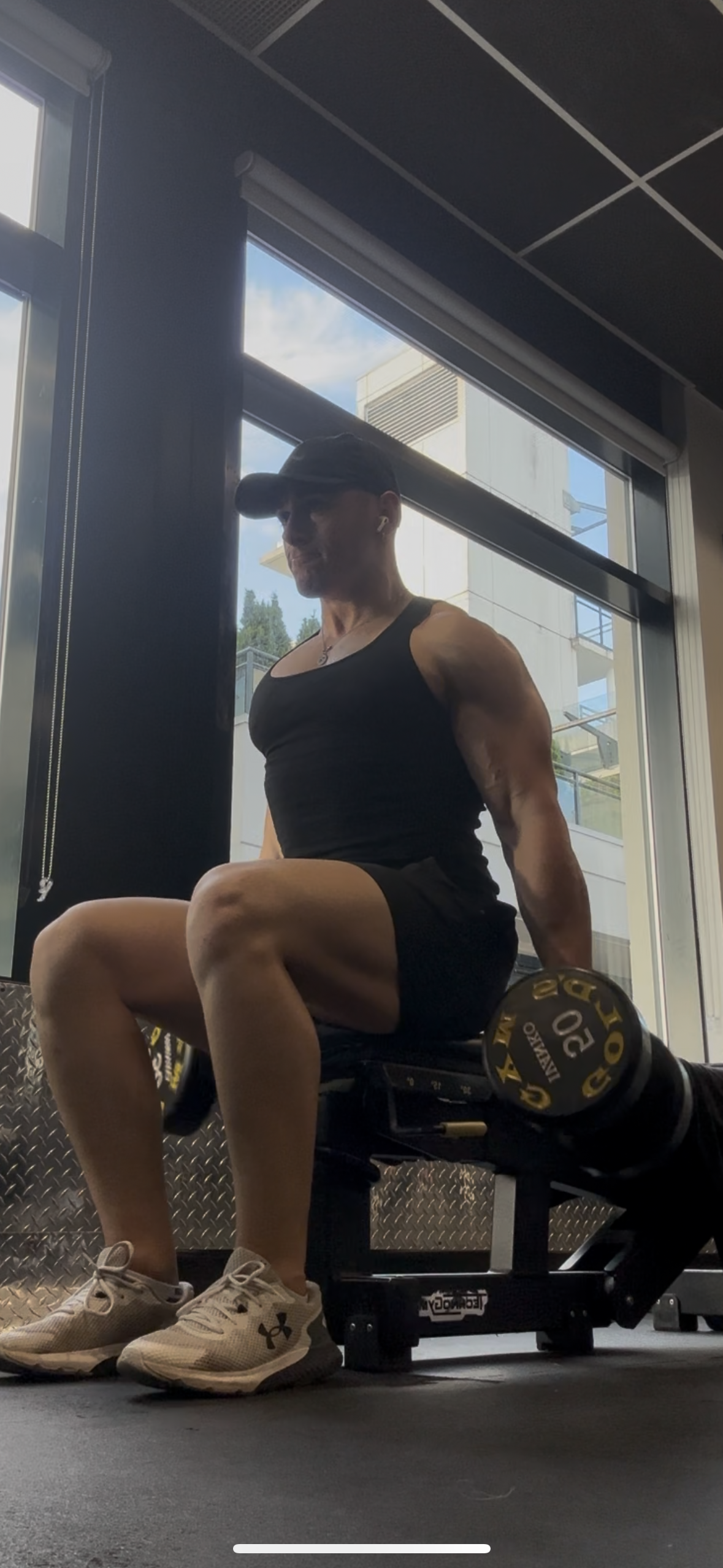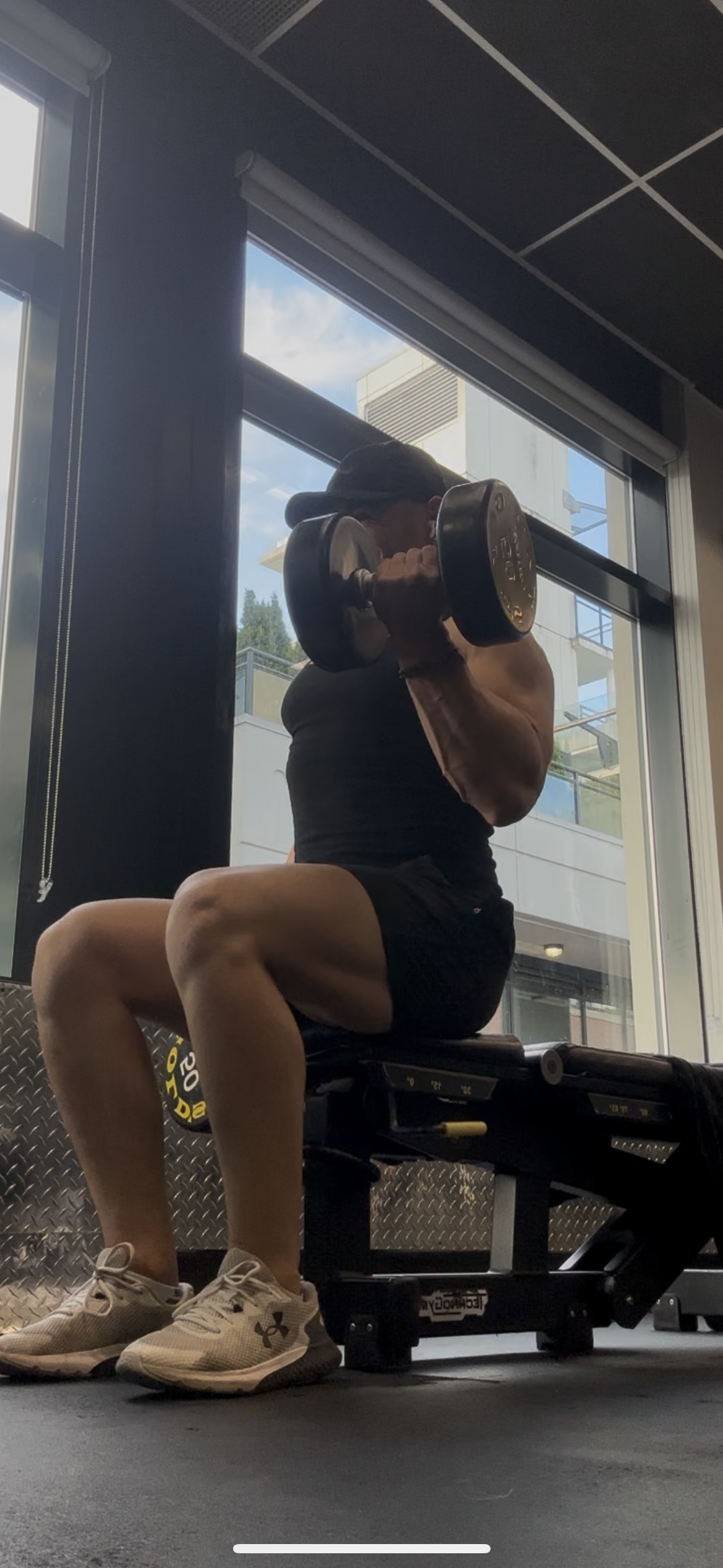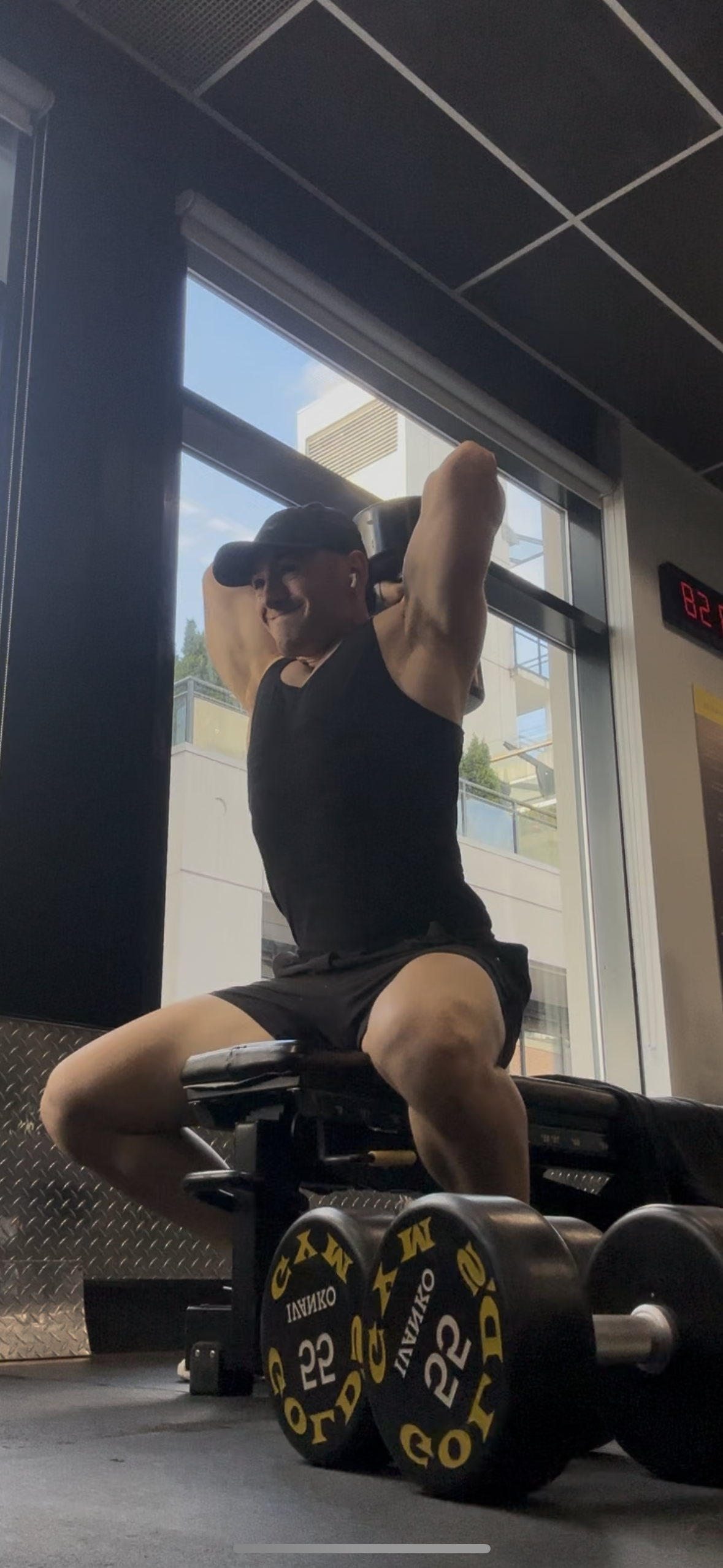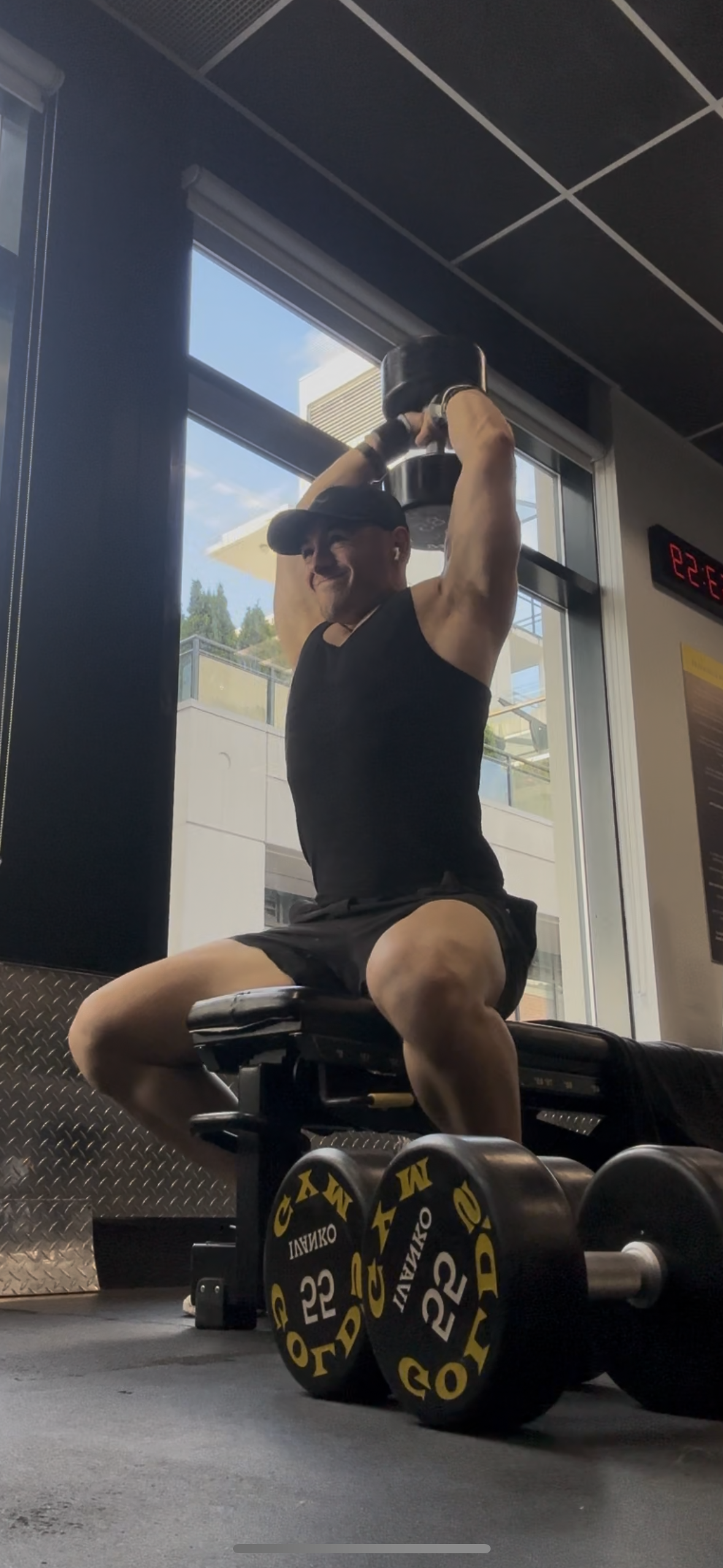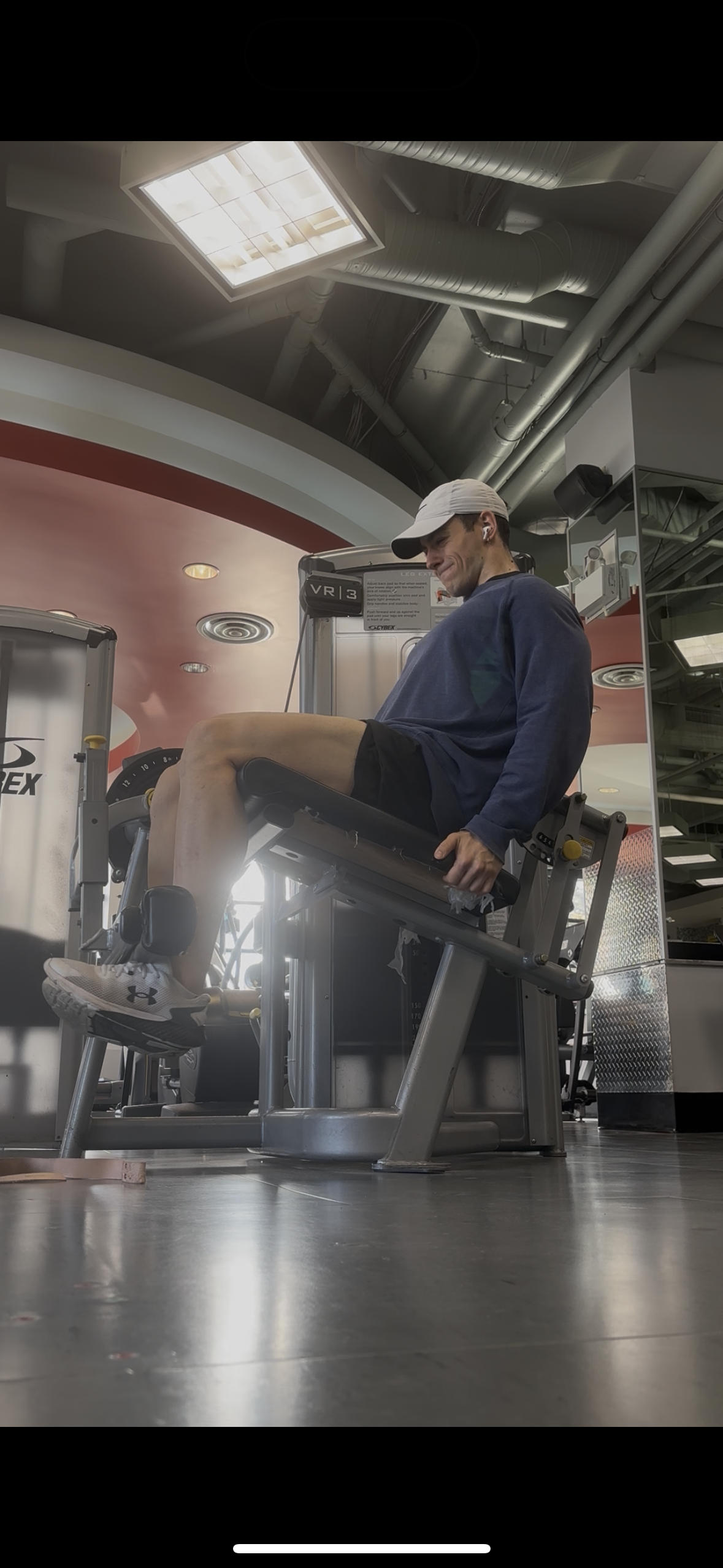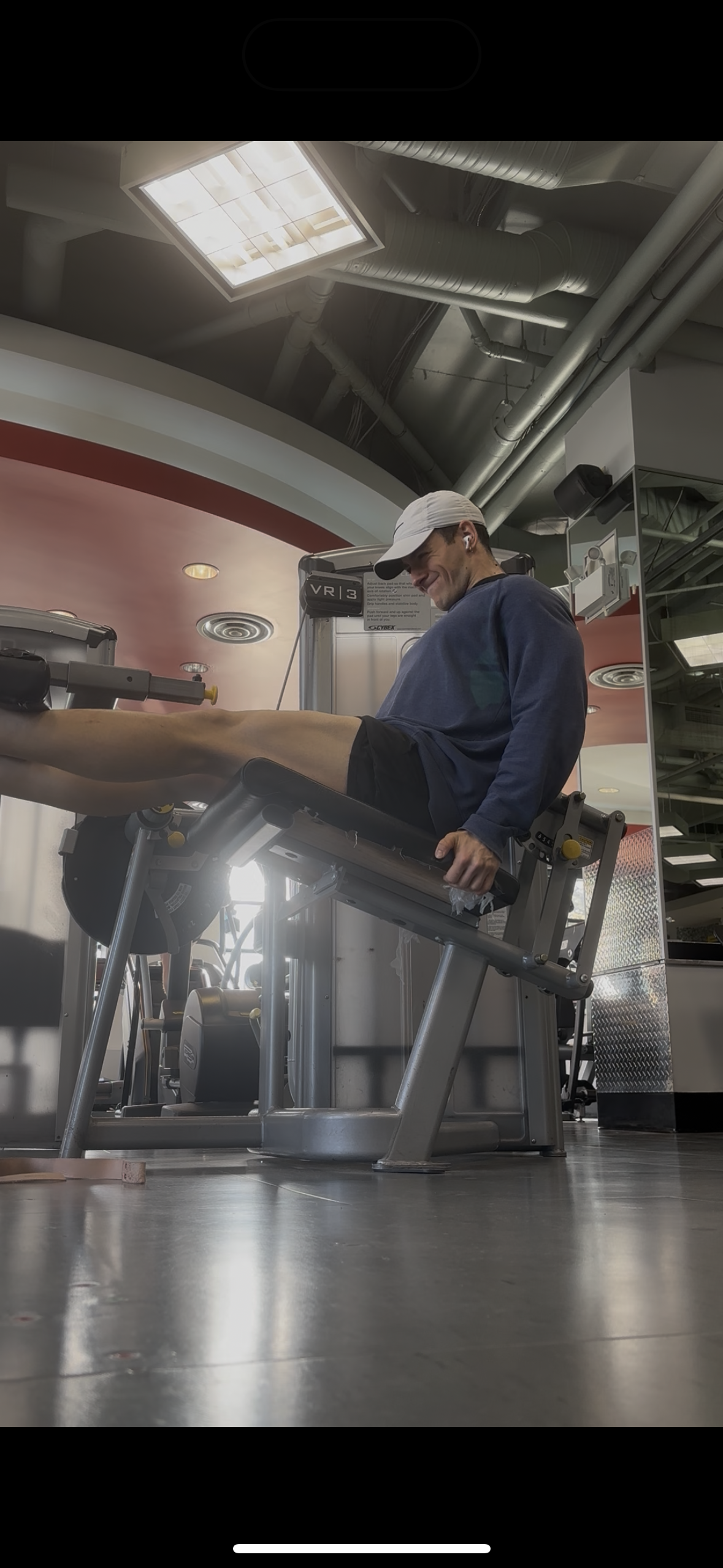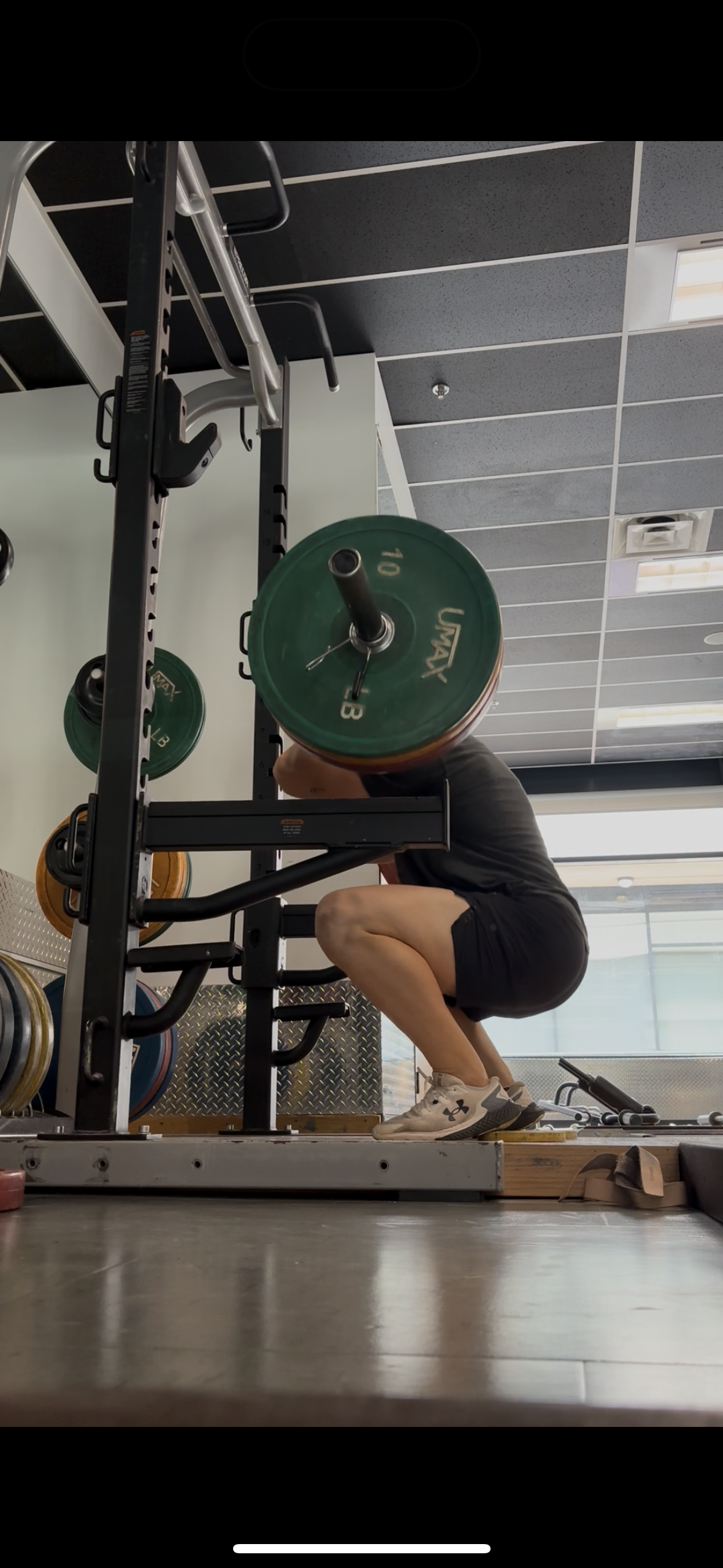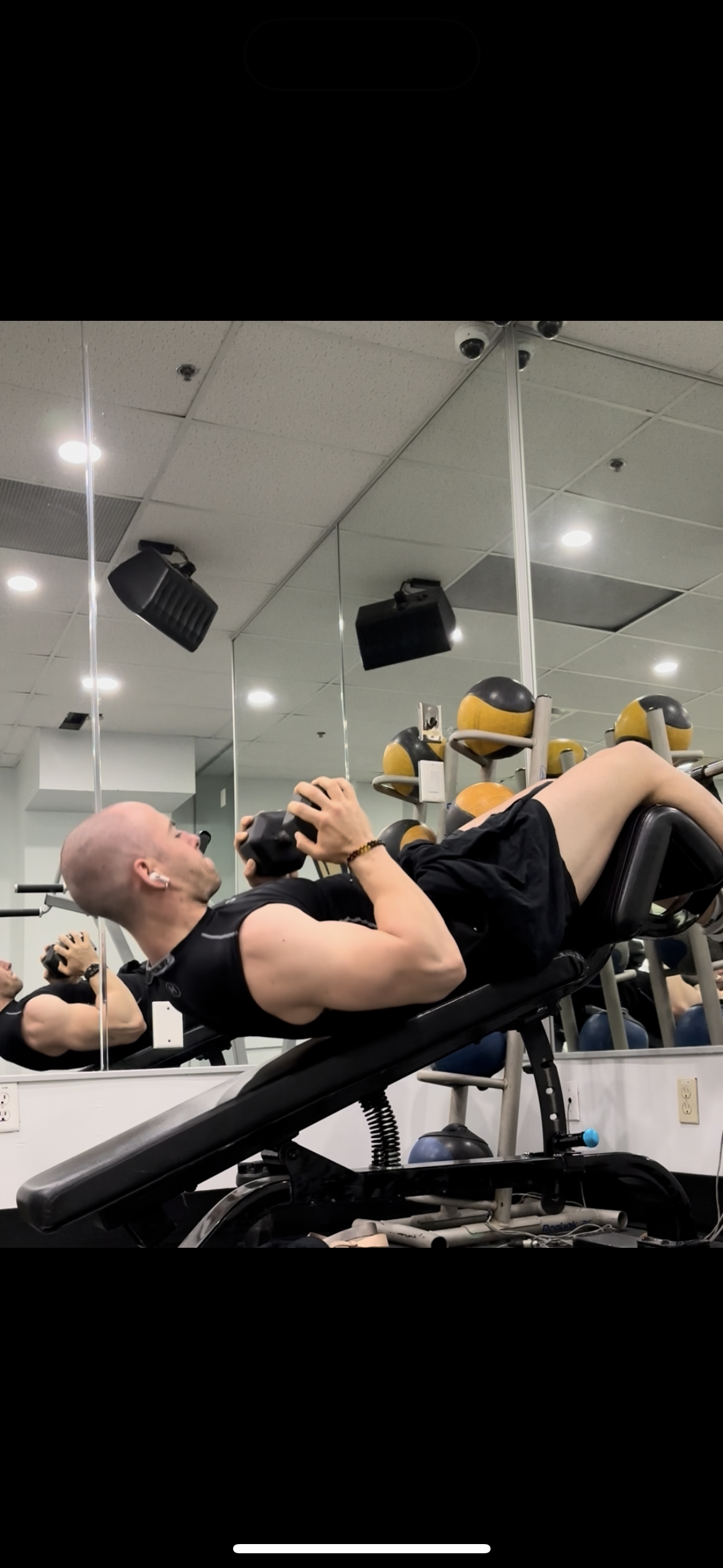Evidence-Based Strategies for Efficient Resistance Training
In today’s world, time is the most valuable resource - this theme continues when it comes to exercise. While some people love immersing themselves in long, intense training sessions, many people just can’t commit to spending more than an hour in the gym. The good news? There are several science-backed strategies that can significantly improve the efficiency of your workouts. These include supersets, drop sets, rest-pause sets, contrast training, pre-exhaustion training, and more.
In chapter 6 of my free eBook Embark: a Guide to Starting and Succeeding at Resistance Training, I touch on this topic because it comes up constantly in client conversations.
“I just don’t have the time to train more than 10 hours a week. I don’t know how anyone with a family, course work, and job can. At that point is it even worth it?”
The answer is yes. Will you have the muscle mass of a bodybuilder or athletic prowess of an NBA player? Probably not. But, with intentional programming, you can achieve an incredible progress in a fraction of the time. So, if you want to build some more efficient workouts, this blog is for you. Let’s jump into it!
Supersets
Supersets are the most common method of saving time in resistance training. They also create the foundation for majority of the tools that follow in this blog. So, it’s important to establish a good understanding of these first before diving deeper.
For majority of strength and conditioning coaches, supersets are a tool ingrained in programming. Coaches everywhere include supersets; the logic is simple: ‘With the time constraints of atheltes, why not get more work done in the same amount of time?’
But for the hobbyist athlete, or the lifestyle athlete who’s balancing work, family, and athletics – this tool provides a unique benefit from a different len. Supersets can significantly reduce the amount of time you spend at the gym. Giving you more time to dedicate towards your other obligations.
What is a superset?
At their core, supersets are a method of training that pairs two or more exercises in succession without rest. The rest follows the completion of all exercises in the superset.
Traditional training:
Exercise 1 -> Rest -> Exercise 1 -> Rest ->Exercise 1 -> Rest -> Exercise 2 -> Rest -> Exercise 2 -> Rest...
Superset training:
Exercise 1 -> Exercise 2 -> Rest -> Exercise 1 -> Exercise 2 -> Rest -> Exercise 1 -> Exercise 2 -> Rest...
When you see exercises grouped together in programming, they are commonly given a number and letter. These indicate the exercise order.
Superset 1:
1A. Exercise 1
1B. Exercise 2
Using our previous example, the workout would go as follows:
1A -> 1B -> Rest -> 1A -> 1B -> Rest -> 1A -> 1B -> Rest -> 1A -> 1B -> Rest ->...
Exercise Selection for Supersets
Supersets can be separated into a few categories that can become quite complex. However, to narrow this categorization down a bit further, two of the most common are antagonist and agonist. These may sound like complicated words, but they have simple meanings.
Antagonist supersets — pair exercises for opposing muscle groups (e.g. biceps + triceps, chest + back).
The benefit? The muscles targeted in the initial movement are allowed to rest completely while you are actively training the second movement, since they don't overlap in function.
Pictured above: a dumbbell-only biceps and triceps antagonistic superset
Agonist supersets — pair exercises for the same muscle group in different positions, angles, or movement patterns (e.g. bench press + push-up; deadlift + kettlebell swing).
Changing one exercise in the order can alter the focus of the superset. Let's think of a hinge-based agonistic superset. For example, a deadlift to a kettlebell swing. The primary mover in both movements are the glutes. This means after both movements, the most likely result is glute fatigue as it is performing the most work. However, if we perform a deadlift, and change the second exercise in the superset from a kettlebell swing to a grip-focused movement, such as a wrist curl or finger squeeze, suddenly the superset becomes much more grip-centric. This impacts the rest of exercise planning. With the change from glute to grip bias, the remainder of the workout would then be impacted by grip fatigue, while the glutes are still relatively fresh.
Using Supersets to Train Multiple Outcomes
The creative possibilities in programming supersets doesn’t stop at strengthening. Pairing a strength-focused exercise with something dedicated to mobility, balance, proprioception, or another desired outcome can add efficiency to your training. A common pairing you will see in athlete’s training is a strength movement and high-velocity movement. This kind of superset that pairs strength and high-velocity training is referred to as contrast or complex training.
Complex and Contrast Training
Complex and contrast training are popular branches of agonistic superset training among athletes. For the sake of simplicity, I am going to use these terms interchangeably, as many non-scientific sources do. Contrast training is a hybrid strength-power modality that involves pairing a heavy resistance exercise with a high-velocity movement of the same biomechanical pattern.
Here’s an example:
Barbell back squat + box jump
Barbell bench press + plyo push-up
Having these two modalities of resistance exercise paired in conjunction allows for the training of strength, coordination, and power simultaneously - hence its popularity in athletes who typically require all these attributes in a sport setting.
Power training in general has been shown to improve change-of-direction ability, vertical jump performance, sprint performance, rate of force onset, motor unit recruitment, intermuscular coordination, motor unit synchronization, and more. These are all attributes that either directly contribute to - or are a proxy of - sport performance (read more here).
Power = Force × Velocity. Contrast training targets both these variables at once.
It is important to note, not a lot of questions surrounding contrast training have been answered with science. It is based on a lot of theory and anecdotal expertise. One of these theories is the concept of post-activation potentiation (PAP). The mechanism behind PAP is not fully understood and it most likely involves both central neural inputs and inter/intramuscular inputs. I could write a whole blog on this, so I won’t go too deep into it.
Read More About Contrast/Complex Training Here
Either way, many studies have shown potential benefits to combining force and velocity modalities when compared to traditional strength training (read more here)
Back to The Basics
Although contrast or complex training might not speed up a workout if you’re a beginner, this is an effective tool for intermediates. It may involve more set-up or consideration, but to stack training multiple fitness outcomes in one superset boosts efficiency for individuals juggling multiple athletic goals.
It's important to note that contrast training is particularly beneficial to anaerobically-focused sports such as basketball, football, rugby, and others – athlete's looking to include strength training as a compliment to their sport-specific work may want to include this type of superset in their programming.
As a beginner, it is important to gain an understanding of movement mechanics and foundational strength before attempting high-velocity movements to lower your risk of injury.
Circuit Training (HICT) or Triple Sets
There are also triple sets, HICT, or – as I like to call them - ‘super-duper’ sets. For the sake of this blog, I will refer to them all as circuit training.
Circuit training involves repeating a sequence of exercises one after another with little to no rest between movements. This definition doesn’t differ from supersets. However, traditionally these differ by the number of exercises in sequence.
How is this different from supersets?
Supersets generally refer to two exercises paired back-to-back.
Circuit training typically involves three or more unrelated exercises sequenced together.
Is Circuit Training Effective?
Whether it is superior in effectiveness for training-related adaptations such as increased lean mass or muscle strength is unclear and heavily debated. However, are the workouts generally more efficient? Yes. There was a recent study (2024) I’d like to highlight published earlier this year that showed its efficiency in a trained female population between the ages of 20 and 34.
In this study, 6 exercises were performed in total for the workout. This was separated into two 3-exercise circuits. The exercises included are listed below:
Leg Press
Flat DB Bench Press
Trap Bar Deadlift
Lat Pulldown
Hip Thrust
Standing DB Shoulder Press
The study found there was “no statistically significant change in muscle girth, skinfold thickness, body mass, or fat mass” between the group doing the two circuits, or the traditional workout.
However, they found that the circuit-based workouts were 15-35 minutes faster. (50-60 minutes compared to 75-85 minutes).
Another novel finding of this study was that the hypertrophic and performance improvements were comparable between the HICT and the traditional strength-training group – in trained athletes.
This goes against the traditional views of advanced athletes requiring a different stimulus, longer exercise bouts, or longer recovery times between sets.
A tool for everyone?
So, circuit training might be an effective tool for speeding up workouts regardless of sex or training history, at least when it comes to hypertrophy or strength.
Sounds great right? Well, it does come at a caveat – access.
Who can engage in circuit training of this style is really limited by how many people have access to multiple pieces of equipment to do these large exercises on, or the space to set up more than two at a time.
For example, at many commercial gyms, it’s unrealistic – and majorly frowned upon - to occupy a lat pull-down, a bench press, and a deadlift platform at the same time.
When incorporating circuit training into workouts – it may be best used when your workout includes multiple exercises that can use the same piece of equipment or used in conjunction with bodyweight.
This is how I have historically used circuit training:
Use circuits that share equipment: flat DB press + DB row + Bulgarian split squat (all with dumbbells + bench).
Incorporate bodyweight movements: push-up + pull-up + leg raise can be done at one station (pull-up bar).
PreEx Training
PreEx training, pre-exhaustion training, or pre-fatiguing, is a type of superset where an isolation movement is paired with a compound movement that uses the same musculature.
The isolation movement is done immediately prior to a compound movement. The goal is to fatigue the primary mover before engaging supporting muscles, allowing it to receive more direct stimulus.
For example, doing hamstring curls before a Romanian deadlift can pre-fatigue the hamstrings, leading to greater hamstring activation in the Romanian deadlift (Read More Here: Article 1, Article 2).
Effectiveness
Its effectiveness has been debated, with some studies supporting its benefits for hypertrophy and performance, and others disagreeing (like this study).
Some suggest it may be more beneficial in rehabilitation contexts, where it allows athletes to achieve greater stimulus using lighter loads on compound movements - exercises that are historically used as end-stage rehab tools.
However, none of this has been scientifically proven.
Examples of pre-exhaustion protocols:
Leg extension -> Squat Variation
Hamstring curl -> Romanian Deadlift
Pec Fly -> Bench Press
Pictured above: a PreEx protocol for the quadriceps
These are some common protocols used. However, the exercise selection and/or muscle you pre-fatigue followed by which compound lift you do has shown variable results. Therefore, the training principle remains to be proven as valid.
PreEx Training: Promising Findings from a Recent Study
In a recent study (2025), Participants performing PreEx training saw very comparable gains to traditional strength training. However, participants performing PreEx training were able to complete the workouts in 35.9% less time. For many, this is a worthwhile trade to make.
Practical Considerations
So, although it may not be more effective than traditional strength training in generating a stimulus for hypertrophy or performance, it may be more efficient. Something to consider! However, if you are a beginner, PreEx training is most likely low on the list of priorities when it comes to training tools. In this case, the focus should be on developing coordination, technique, form, and foundational strength.
Realistic Superset Toolkit
Contrast training, agonistic supersets, HICT, PreEx training – these are all quite complex concepts when starting to exercise.
Not to mention, the guarantee that multiple pieces of equipment will be free is a luxury not many people have, including myself. However, I have still found ways to include these tools in my programming throughout the years.
Training during the busiest hours in commercial gyms, or the crammed spaces of university gyms forces you to get creative. So, here are some practical tips from my training experience over the years:
Bring a pair of dumbbells to a machine and pair your exercises to get more done without needing multiple machines.
Use bodyweight movements or movements that use the same equipment in contrast training as much as possible — this requires less equipment.
Cables are versatile. Pairing 2-3 cable exercises in succession, such as a bicep curl and triceps extension, or Pallof press and face pull, can save you time.
Drop sets
Drop sets are our second grouping of tools for more efficient workouts. It’s a classic intensity technique most gym-goers know, used to extend a set beyond involuntary failure by reducing the load and continuing to lift with little to no rest.
Drop sets are very effective at lowering total training duration. Some studies have found that drop set modalities can reduce training time by 50-66% (Source)
While drop sets can be highly efficient for hypertrophy and performance, they should be programmed strategically. Drop sets can quickly summate to a very large amount of total work in a session (Source) Improper programming can generate excessive fatigue or lead to recovery issues, particularly if you're training with high frequency.
Another downside of drop sets is that it becomes very difficult to standardize reps and form, along with track progressive overload.
However, this makes it the perfect first tool for beginners who aren’t very meticulous with their tracking yet.
Load-Based Drop sets
This is your most basic drop set, and the place to start if you are looking for a simple tool to speed up workouts. Once involuntary failure is achieved, the weight is lowered by 20–30% (usually) and the exercise is continued.
This process can be repeated multiple times, often referred to as “double” or “triple” drop sets.
Mechanical Drop sets
Mechanical drop sets are more advanced drop sets that allow you the same function of a typical drop set, but without changing the weight.
Instead, the set is extended past failure by shifting to a mechanically easier variation of the same exercise, rather than reducing the load.
This is done typically by changing the moment arm of the movement. Without getting into a full physics lesson, the moment arm is the distance between the weight and the joint moving it. The further the weight is from the joint moving it, the harder the movement becomes.
You can read more about moment arms by clicking here: Moment Arms and Exercise Progression.
Here are three examples:
Dumbbell Lateral Raise -> Dumbbell Upright Row
Dumbbell Fly (Wide) -> Dumbbell Fly (Bent Elbow)
Weighted Decline Sit-up (Weight above head) -> Weighted Decline Sit-up (Weight at chest)
Pictured above: a mechanical dropset variation of a typical decline sit-up
Like the other more advanced techniques in this blog, they require experience to be done properly without compromising form.
Tempo Drop sets
Tempo drop sets combine the principles of time under tension and within-set fatigue by manipulating lifting speed or tempo across sets.
In addition, or instead of reducing the load, the tempo is adjusted to make the exercise slightly easier, in pursuit of a longer continuous effort.
For example, after reaching failure with an exercise, speeding up the tempo, or removing a pause can make the movement easier.
This is an excellent tool, especially when training with lighter weights for creating more intense and efficient workouts.
Like the other more advanced techniques in this blog, they require experience to be done properly without compromising form.
Combination Drop Sets
As you become more experienced in training, a world of tools becomes available to you. Combining multiple types of drop sets – into one set - can create intense, quick, and enjoyable workouts.
For example:
Starting with a heavy load at a paused tempo
Hastening the tempo when approaching failure
Lowering the load and resuming the paused tempo until failure
Removing the pause again.
You then have 4 ‘drops’ in one set.
Realistic Drop Set Toolkit
Like supersets, drop sets can get quite complex. So, just as I did with supersets – here are some more practical tips based on the knowledge above to bring drop sets into your programming:
Instead of load-based drop sets, use mechanical drop sets with dumbbell movements to avoid needing to grab a second pair of dumbbells.
Use load-based drop sets on movements that are difficult to track and progressively overload, like lighter isolation movements. These include isolations that target small muscles like bicep curls, lateral raises, and triceps extensions, among others.
Using tempo-based drop sets on compound lifts can be a less taxing way to get more stimulus; while training specific portions of the movement you have trouble with.
Rest-Pause Sets
Rest-pause sets, or cluster sets, are a training technique that involves partitioning a set into smaller sub-sets, taking a small rest or ‘pause’ between reps.
For example, instead of performing 10 pull-ups, perform 6–8, take a short 10-second break, and try to perform 6–8 more. You have now accumulated 2–6 extra reps of volume in one set.
Like many advanced resistance training techniques, the research is heavily debated on the effectiveness of rest-pause sets. Some research has found that they are superior to standard training (Source), others report no effect (Source).
Not only this, but if they are effective — no one seems to know exactly why. Some speculate it could be due to the preservation of contraction velocity over a prolonged period, or that it is all perceptually driven intensity.
However, one common theme is that rest-pause sets generally result in comparable results with less total workout time (Read More).
Realistic Rest-Pause Set Toolkit
In full transparency, rest pauses are not a tool I use frequently. As a resistance-based athlete that is self-coached, I do not want to give myself the room to stop a set early. Reaching failure or peak mechanical tension is frequently the goal.
However, there is one type of exercise where I do include rest pauses: hinges. Not only hinges, but any bent-over movement. This includes barbell bent-over rows, Pendlay rows, or Romanian deadlifts.
In these movements, I perform rest pauses out of a need to breathe, not to lift. Bracing in a hinged position for an excessive amount of time can limit one’s ability to reach muscular failure. Besides, holding an excessive Valsalva maneuver (brace), can cause spikes in blood pressure that add systemic demand to the lift (Source) To reset my brace, even in the middle of a set, I often return to a “locked out” (fully erect) position, take a few breaths to bring my blood pressure down, and resume.
Thank you for taking the time to nerd out with me over these evidence-based training strategies. Remember, the number one prerequisite for any of these strategies to contribute to hypertrophy, strength, or power is training hard enough!
If this blog felt too advanced for where you are currently at in your fitness journey, check out my free eBook by clicking the link below. In this book I talk about the basics of resistance training:
Embark: a Guide to Starting and Succeeding at Resistance Training

